Baseball fans love to discuss and debate their favorite teams.
Major League Baseball offers a rich tapestry of history, rivalries, and regional pride with 30 franchises spread across the United States and Canada. The MLB teams in alphabetical order are: Angels, Astros, Athletics, Blue Jays, Braves, Brewers, Cardinals, Cubs, Diamondbacks, Dodgers, Giants, Guardians, Mariners, Marlins, Mets, Nationals, Orioles, Padres, Phillies, Pirates, Rangers, Rays, Red Sox, Reds, Rockies, Royals, Tigers, Twins, White Sox, and Yankees.
These teams are divided between the American League and National League, each with three divisions – East, Central, and West.
From the storied franchises like the New York Yankees and Boston Red Sox to newer additions like the Arizona Diamondbacks and Tampa Bay Rays, each team brings its own unique flavor to America’s pastime.
Whether you’re a die-hard fan planning a ballpark tour or simply looking to expand your baseball knowledge, understanding the MLB team landscape is essential.
This alphabetical list provides a quick reference point for all 30 teams, making it easier to keep track of the league’s diverse roster of franchises.
History and Evolution of MLB Teams
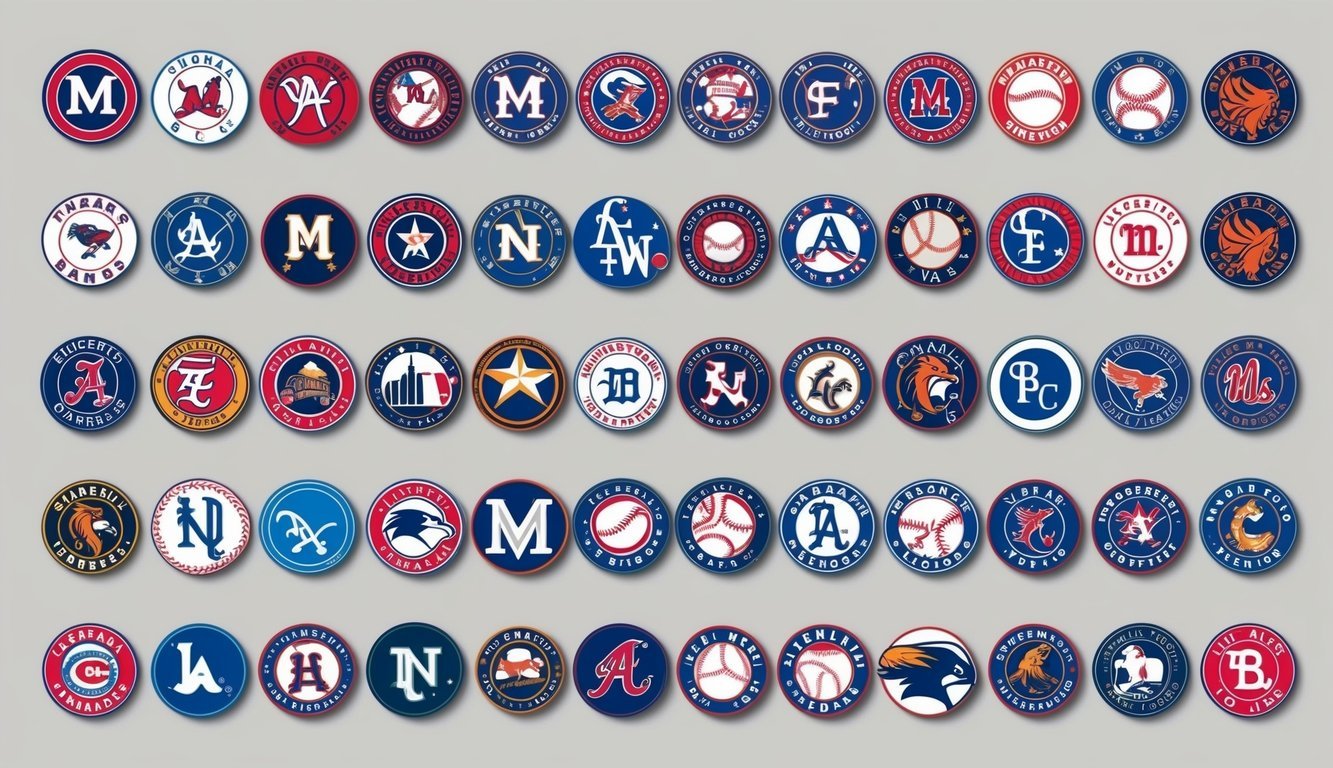
Major League Baseball’s rich history spans over a century, marked by team formations, expansions, and memorable championships.
The league has grown from its humble beginnings to become a cornerstone of American sports culture.
Formation and Founding Teams
The National League, established in 1876, laid the foundation for MLB.
Original teams included the Boston Red Stockings (now Atlanta Braves) and Chicago White Stockings (now Chicago Cubs).
The American League joined as a major league in 1901, bringing fierce competition.
These early years saw the rise of legendary franchises like the New York Yankees and St. Louis Cardinals.
Teams played in iconic ballparks, fostering deep-rooted fan loyalty.
The World Series began in 1903, crowning a champion between the two leagues.
Expansion and Relocation
MLB’s landscape changed dramatically in the expansion era, starting in 1961.
New teams joined, including the Los Angeles Angels and New York Mets.
The league grew to 30 teams by 1998 with the addition of the Arizona Diamondbacks and Tampa Bay Devil Rays.
Several teams relocated, seeking new markets.
The Dodgers and Giants moved from New York to California in 1958.
The Braves found a home in Atlanta, while the Athletics settled in Oakland.
These changes brought baseball to new cities and fans across North America.
Historic Milestones and World Series Champions
MLB’s history is filled with unforgettable moments and dominant dynasties.
The New York Yankees lead with 27 World Series titles, creating a legacy of excellence.
Other notable champions include the St. Louis Cardinals (11 titles) and Boston Red Sox (9 titles).
Recent years have seen long droughts end, with the Chicago Cubs winning in 2016 after 108 years.
Milestone achievements like Hank Aaron‘s home run record and Cal Ripken Jr.’s consecutive games streak have captivated fans.
These moments, along with thrilling World Series battles, continue to shape MLB’s rich tapestry.
Team Geography and Divisional Structure
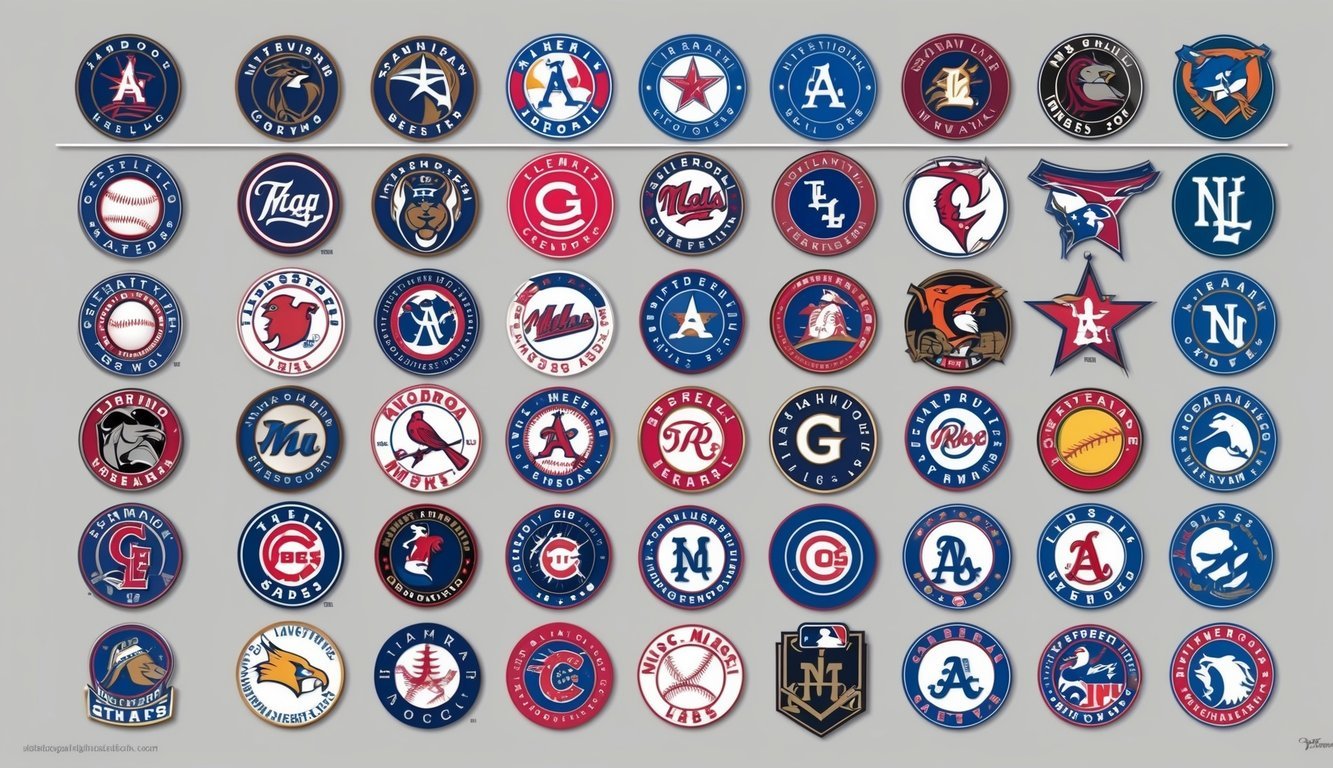
MLB teams are spread across the United States and Canada, organized into two leagues and six divisions.
This structure creates natural rivalries and allows for balanced scheduling throughout the season.
Each team competes tirelessly during the MLB regular season games explained in detail by analysts and fans alike.
This season typically runs from late March or early April through late September, culminating in the postseason.
The competition among teams not only heightens the excitement but also keeps fans engaged with their favorite franchises as they battle for playoff positions.
American League Divisions
The American League (AL) consists of 15 teams split into three divisions:
East: Boston Red Sox, New York Yankees, Tampa Bay Rays, Toronto Blue Jays, Baltimore Orioles
Central: Chicago White Sox, Cleveland Guardians, Detroit Tigers, Kansas City Royals, Minnesota Twins
West: Houston Astros, Los Angeles Angels, Oakland Athletics, Seattle Mariners, Texas Rangers
Each division features teams from diverse geographic regions.
The East spans the northeast coast, while the Central covers the Midwest.
The West stretches from Texas to the Pacific Northwest.
National League Divisions
The National League (NL) also has 15 teams divided into three divisions:
East: Atlanta Braves, Miami Marlins, New York Mets, Philadelphia Phillies, Washington Nationals
Central: Chicago Cubs, Cincinnati Reds, Milwaukee Brewers, Pittsburgh Pirates, St. Louis Cardinals
West: Arizona Diamondbacks, Colorado Rockies, Los Angeles Dodgers, San Diego Padres, San Francisco Giants
The NL East teams are located along the eastern seaboard.
The Central division covers the Midwest and Great Lakes region.
The West spans the Southwest and Pacific Coast.
This divisional setup creates exciting rivalries and allows fans to easily follow their favorite teams’ progress throughout the season.
Stadiums And Their Cities
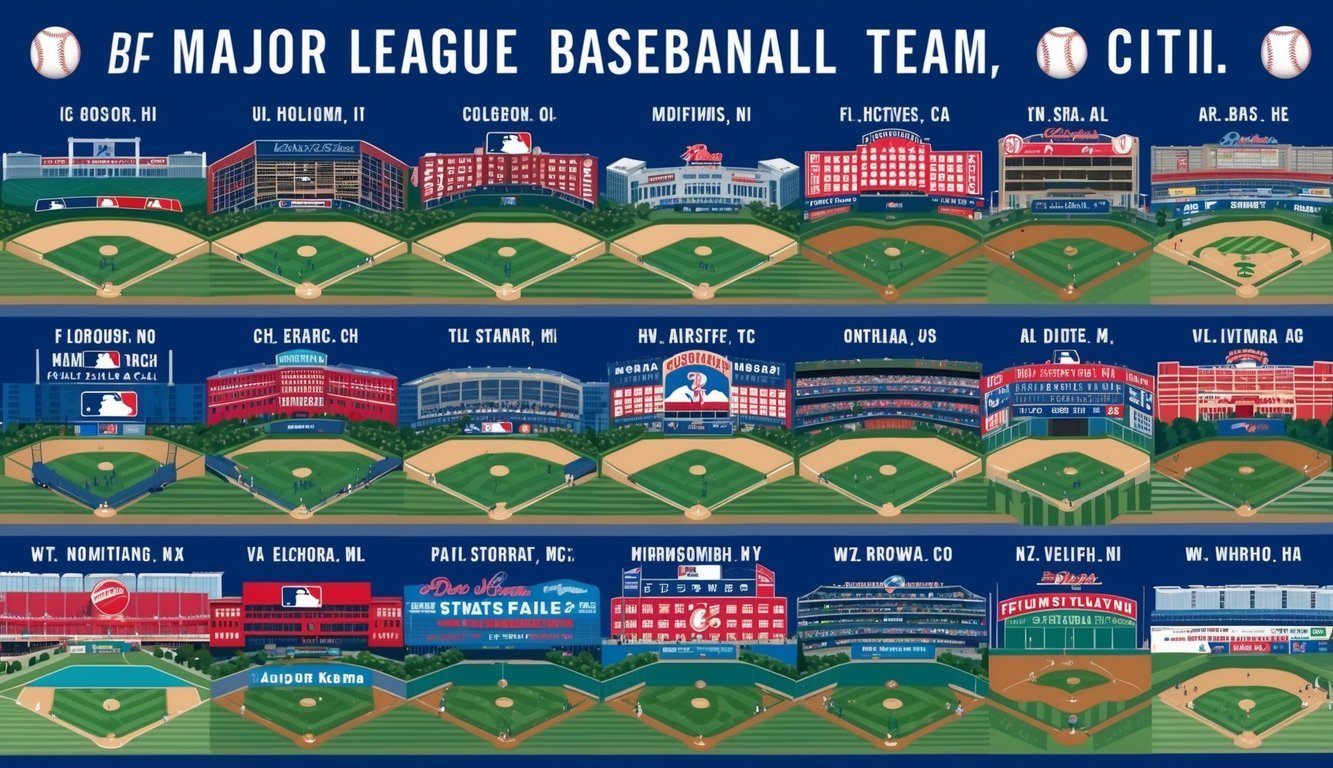
Major League Baseball stadiums are iconic venues that shape the fan experience and team identities.
These ballparks range from historic landmarks to modern marvels, each with its own unique features and locations.
Iconic MLB Parks
Fenway Park in Boston stands as the oldest MLB stadium, dating back to 1912.
Its Green Monster wall is a legendary feature.
Wrigley Field in Chicago, built in 1914, charms fans with its ivy-covered outfield walls.
Yankee Stadium in New York, though rebuilt in 2009, carries on the legacy of its predecessor.
Dodger Stadium in Los Angeles offers breathtaking views of the city.
PNC Park in Pittsburgh is praised for its scenic riverside location.
Oriole Park at Camden Yards in Baltimore sparked a trend of retro-modern ballparks when it opened in 1992.
Stadiums by Geographic Location
MLB stadiums span the continent, from coast to coast.
On the East Coast, Citizens Bank Park hosts the Philadelphia Phillies, while Citi Field is home to the New York Mets.
The Toronto Blue Jays play at Rogers Centre, the only MLB stadium outside the United States.
In the Midwest, Target Field welcomes Minnesota Twins fans in Minneapolis.
Comerica Park serves as the Detroit Tigers’ home.
American Family Field in Milwaukee features a retractable roof for the Brewers.
Out west, Coors Field in Denver is known for its high-altitude home runs.
Globe Life Field in Arlington, Texas, opened in 2020 as the newest MLB stadium.
On the West Coast, Angel Stadium houses the Los Angeles Angels in Anaheim.
Teams and Their Legacies
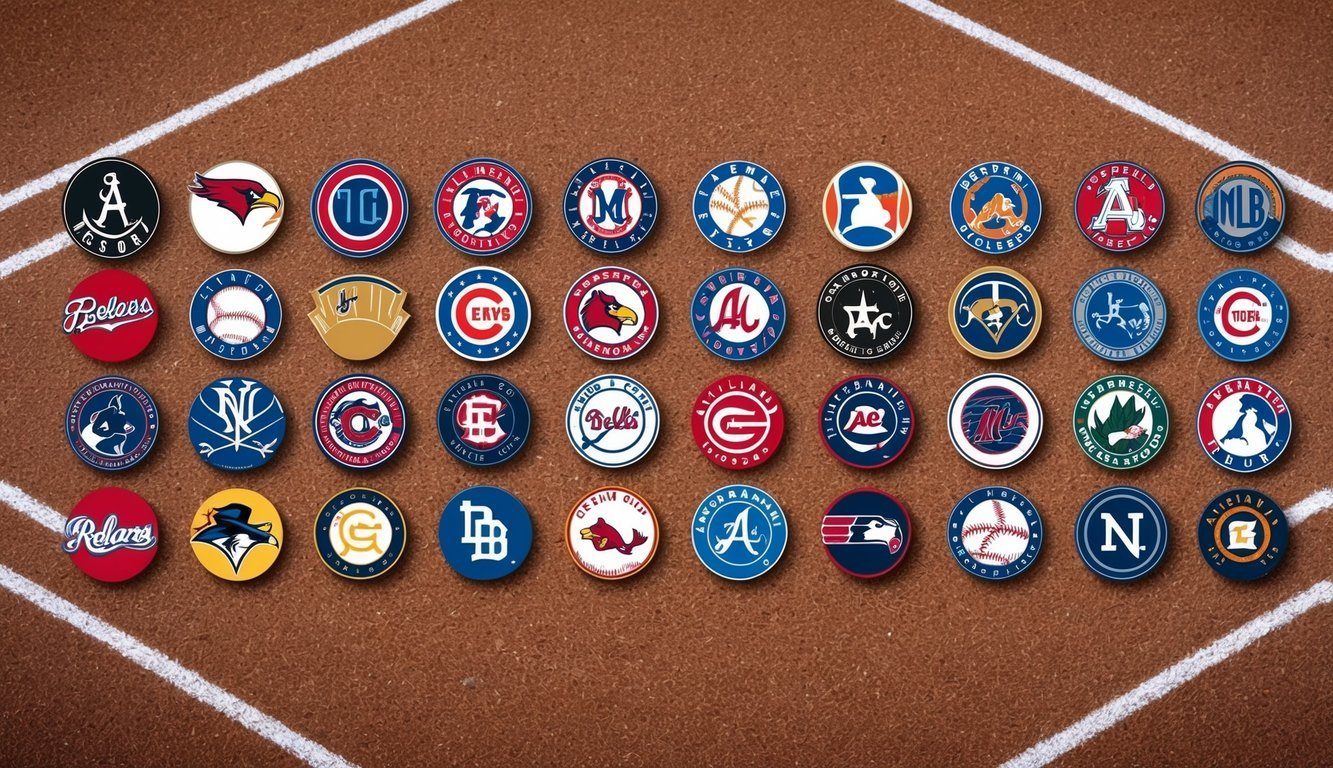
Major League Baseball boasts a rich tapestry of franchises with storied histories and iconic players who have left indelible marks on America’s pastime.
From century-old teams to more recent additions, each organization contributes to the sport’s enduring legacy.
Renowned MLB Franchises
The New York Yankees stand as baseball’s most celebrated franchise, with 27 World Series titles.
The St. Louis Cardinals follow with 11 championships, embodying Midwest baseball excellence.
The Boston Red Sox, after breaking the “Curse of the Bambino” in 2004, have claimed four titles since.
The Los Angeles Dodgers, originally from Brooklyn, have a legacy spanning both coasts.
The San Francisco Giants, their longtime rivals, boast a history dating back to 1883 in New York.
The Chicago Cubs ended a 108-year World Series drought in 2016, energizing their loyal fanbase.
Legendary Players and Their Teams
Babe Ruth‘s name is synonymous with the Yankees, revolutionizing the game with his power hitting.
The St. Louis Cardinals saw Stan Musial become “The Man” over his 22-year career. Ted Williams, the last player to hit .400 in a season, is forever linked to the Red Sox.
For the Cincinnati Reds, Joey Votto has been a model of consistency and on-base prowess.
Larry Walker made his mark with the Colorado Rockies, becoming the first Canadian-born player to win the NL MVP.
Mike Trout continues to build his legacy with the Los Angeles Angels, drawing comparisons to all-time greats.
Current State of MLB Teams
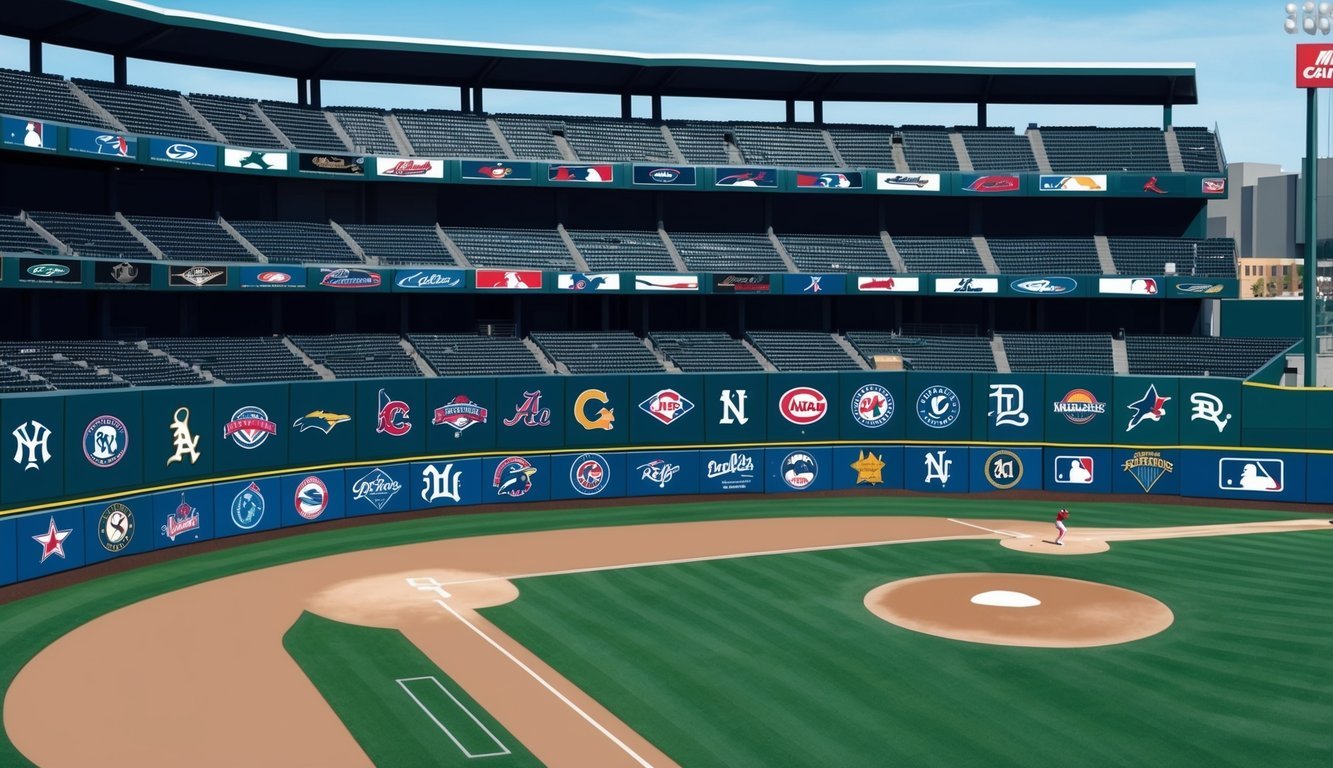
Major League Baseball continues to evolve with shifting team dynamics and technological advancements.
Teams strive for success through improved performances and data-driven strategies.
Recent Team Performances
The Los Angeles Dodgers have maintained their powerhouse status, consistently reaching the playoffs.
The Houston Astros remain strong contenders, bouncing back from controversy.
The New York Yankees, despite high payrolls, face challenges in translating regular-season success to World Series wins.
Smaller market teams like the Tampa Bay Rays impress with their ability to compete using innovative strategies.
The San Diego Padres have made waves with big signings, aiming to challenge the Dodgers’ dominance.
Rebuilding efforts are underway for teams like the Pittsburgh Pirates and Detroit Tigers.
They focus on developing young talent and acquiring prospects through trades.
Impact of Technology and Analytics
Advanced analytics and technology are heavily relied on by MLB teams.
Player performance insights are provided by Statcast data, which influences strategy and player development.
High-speed cameras and sensors are used by teams to analyze pitching mechanics and batting swings.
This tech helps players make micro-adjustments to improve their game.
Teams have grown their analytics departments.
They hire data scientists to gain competitive edges.
Shifts in defensive positioning, based on statistical analysis, have become commonplace.
Player health and fitness are monitored by wearable technology.
This data is used by teams to prevent injuries and optimize player performance throughout the long season.
